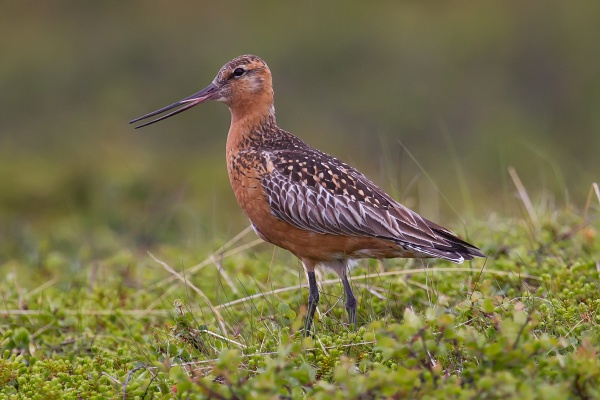Facts About Bar-tailed godwit
The bar-tailed godwit is an intriguing large wader bird, easily identified by its striking red breeding plumage, long legs, and distinctive upturned bill. Belonging to the Scolopacidae family, these birds thrive on bristle-worms and shellfish found in coastal mudflats and estuaries.
During the breeding season, bar-tailed godwits inhabit Arctic regions ranging from Scandinavia to Alaska. When winter arrives, they undertake an astonishing migration to temperate and tropical areas in the Old World, Australia, and New Zealand. One subspecies, Limosa lapponica baueri, holds the record for the longest non-stop flight of any bird, covering an incredible 29,000 kilometers round-trip.
The genus name Limosa means "muddy" in Latin, referring to their preferred muddy habitats, while lapponica denotes Lapland. The English name "godwit" might be derived from their call or from Old English, meaning "good creature." These birds have relatively short, blue-grey legs, and a long, bi-colored bill. Males and females can be distinguished by their differing plumage patterns.
Bar-tailed godwits have a varied diet, primarily feeding on bristle-worms, small bivalves, and crustaceans found in wetlands. Notably, males and females often exhibit different feeding preferences. During breeding, these birds nest in places like Scandinavia, northern Asia, and Alaska, with both parents taking turns to incubate the eggs.
Their migration journey is nothing short of epic. Some subspecies travel all the way to Australia and New Zealand for the winter, making them true long-distance travelers. However, the bar-tailed godwit faces significant conservation challenges. They are currently listed as Near Threatened, with their populations declining due to habitat loss in critical staging areas like the Yellow Sea, which affects their survival rates.
Efforts to protect these remarkable birds are ongoing. They are covered under international agreements such as the Agreement on the Conservation of African-Eurasian Migratory Waterbirds (AEWA), as well as national wildlife protection laws. These measures aim to ensure that the bar-tailed godwit continues to grace our coastal mudflats and estuaries for generations to come.

 South Sudan
South Sudan